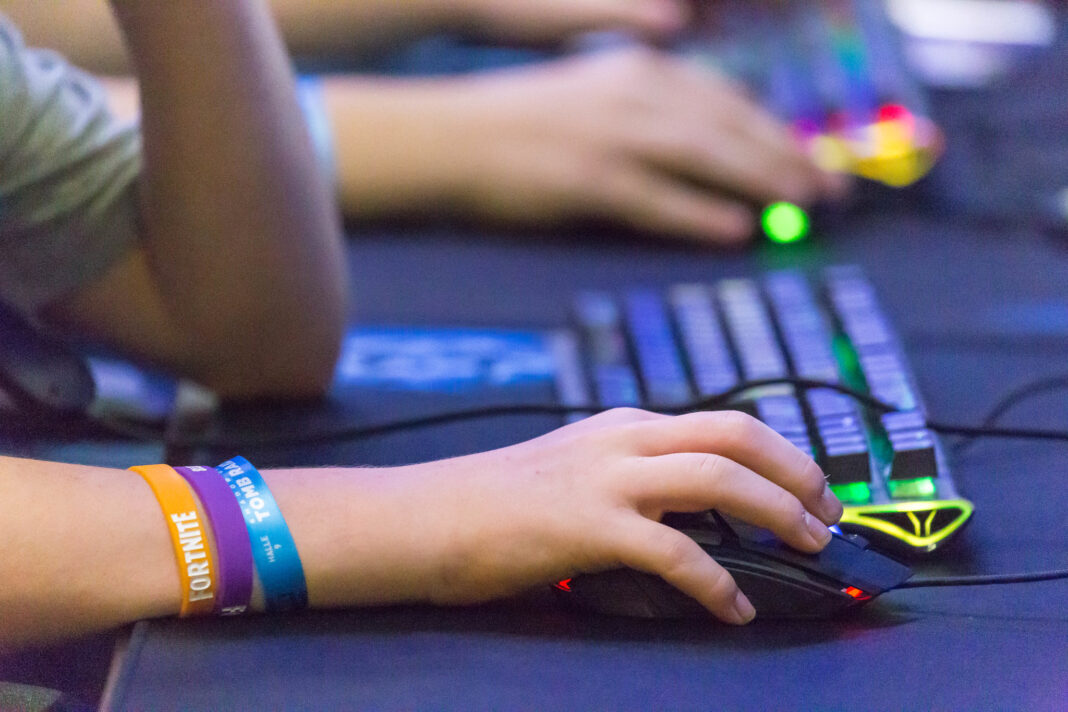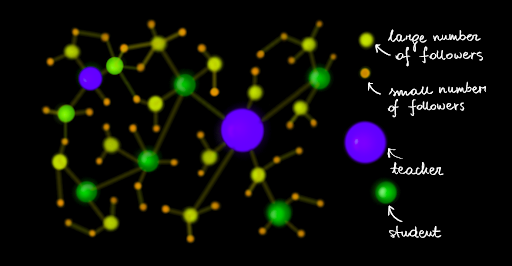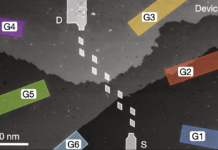Distance education, also called remote learning, enables the development and evaluation of qualifications and professional skills of citizens, who live in hard-to-reach areas. Thanks to that form of learning many problems are solved. It makes it possible to attend online courses even in rural areas, where economic inequality limits the access to educational facilities. Of course, it is not an “ideal” solution to equal chances, so global access to distance learning brings new challenges. One of them is the lack of motivation, where students suffer from the lack of face-to-face contact and the huge burden of ‘independent study’: they might experience fatigue or boredom, which impede their studies.”
Distance learning is nothing new. It has beginnings that can be dated back to more than 100 years. Its origins are dated back to the first correspondence-based course in the 18th century, while due to the rapid technological developments, distance education offered much more than the text from audio and video streaming to courses performed in the virtual world. Recently, it even offers to experience education through games making gamification an educational tool1,2.
Today, the digital generation experiences such learning more often than ever before, and so gamification has become a popular tactic to encourage students and increase their engagement and motivation3. As the Kapp definition puts it, gamification is a way of education “using game-based mechanics, aesthetics and game thinking to engage people, motivate action, promote learning, and solve problems” 4. It enables tutors and mentors to measure students’ progress in each given learning program at any stage.
The learning rules are clear from the beginning to ensure a fair study environment. Students may also get overall feedback about their progress5. Constant progress in the game development industry has brought about many useful tools that do not require installation on the computer and can be used on the go6. This learning method makes it possible to easily learn almost anything that can be memorized, from languages and history to anatomy and molecular biology.
Figure 1 shows a schematic image representing social networking. Unlike early examples of distance learning, gamification also impacts infants and social networking7. This form of education enhances the learning experience, enables students to get real-time feedback, and stimulates creativity and solving problems skills. Gamification could also positively impact the medical curriculum8. Together with medical application and patient’s simulations provides the opportunity for better involvement, problem-solving, and collaboration among medical students, skills that are important for future healthcare delivery.
Broad internet access allows for communication among users of educational tools, which impacts distance education and gamification9. It enables attendance in courses even without the direct exposure of students to teachers (quizzes, games). Interestingly, mediated communication enhances interactions among people involved in virtual tools in education8.
Gamification as a tool for language acquisition and development
Language acquisition is one of the fields that have perhaps seen the most widespread use of gamification. Historically, languages were mostly taught in person by a face-to-face tutor. This learning method has persisted up to now as it is very effective when it comes to practicing aspects of language such as pronunciation and fluency of speech. However, many aspects of language acquisition, in particular, at the beginner stage, have benefited largely from a gamification approach.
There exist a multitude of game-styled applications that aim to develop students’ vocabulary. They usually offer various levels of language proficiency, starting from the most basic vocabulary up to specialist words. An example of this can be the application Duolingo. Duolingo was released in 2012 and, since then, has been in use by millions of people. The app is a prime example of learning via gamification: it keeps track of the user’s performance and rewards them with points for the successful acquisition of new vocabulary and application of this vocabulary in context combined with the correct use of grammatical rules (e.g., creating simple sentences using blocks).
New vocabulary is obtained using flashcards, correlating the target language expressions with the user’s preferred language of instruction. It even offers a progression system based on levels: upon reaching an appropriate level, the user unlocks new, themed vocabulary sets. Duolingo also trains the user’s listening skills through exercises.
Naturally, such software is not capable of training every aspect of language and, by itself, will never produce a near-native-speaker language proficiency. There are still elements of language that are best practiced in the real-world environment: pronunciation and accents vary regionally, and natural confidence and fluency are best achieved by practicing with a face-to-face tutor.
Yet, such platforms offer a very good introduction to the vocabulary and the basic grammatical rules of various languages while encouraging the students to learn. This increases the chance that a student will follow up the Duolingo lessons with extra classes for a certain language. Should the student feel less motivated to continue learning, Duolingo utilizes push notifications filled with witty and humorous reminders to continue studying. This is used to remind the student of the need to revise and practice.
Quiz-based apps for learning
Another tool based on the principles of gamification but applied to various learning opportunities (including language acquisition) is quiz-based software. Examples of this include Quizlet, which offers flashcard-based learning, and Kahoot, which offers a platform where multiple students can test and revise their knowledge of a language. These tools have one crucial principle at their core: flexibility. They test for almost any kind of language skills, from comprehension to grammar, vocabulary, and even pronunciation.
For instance, Kahoot uses a simple format: it displays a question and asks the students to answer it. However, the questions can be supplemented with multimedia, such as sounds, pictures, or videos. Thus, teachers can create all sorts of quizzes on the platform, asking students to recap vocabulary, choose the correct definition of a certain word, listen to different pronunciations, and decide which one is the correct one.
This versatility makes platforms such as Kahoot highly viable for learning. And, in the case of Kahoot, the learning is enhanced by the factor of competitiveness: multiple students can be asked to compete against each other on a quiz. Their score is calculated based on both how accurate and how quick their answers are, training the two crucial language skills necessary for proficient communication: the ability to receive rapidly, process, comprehend, and respond to language stimuli, and the ability to do so correctly.
Remote learning can be handled in many ways; however, as of late, gamification has become more and more popular as a tool for distance education. It appears to be a highly viable asset that can be used to supplement more classical techniques of education even though it cannot replace other methods of acquisition of knowledge. Gamification can make picking up facts fun, enjoyable, and interactive, resulting in an absolutely great learning experience.
This article is a joint work of Karol Masztalerz (Department of Physics and Astronomy, University of Manchester), Agnieszka Pregowska (Institute of Fundamental Technological Research, Polish Academy of Sciences), and Magdalena Osial (Faculty of Chemistry, University of Warsaw) as a part of the Science Embassy project.
References
- Betts, B.; Bal, J.; Betts, A. Gamification as a tool for increasing the depth of student understanding using a collaborative e-learning environment. International Journal of Continuing Engineering Education and Life-Long Learning 2013, 23(3), 213–228. DOI:10.1504/IJCEELL.2013.055405
- Deterding, S.; Dixon, D.; Khaled, R.; Nacke, L. From game design elements to gamefulness: Defining “gamification”. In Lugmayr, A.; Franssila, H.; Safran, C.; Hammouda, I. (Eds.), MindTrek 2011, 9–15. DOI: 10.1145/2181037.2181040
- de Byl, P.; Hooper, J. Key attributes of engagement in a gamified learning environment. In Carter, H.; Hedberg J. (Eds.), Proceedings of30th Conference of Australasian Society for Computers in Learning in Tertiary Education (ASCILITE) 2013, 221–229. Sydney, Australia: ASCILITE
- Kapp, K. M. The gamification of learning and instruction: game-based methods and strategies for training and education.John Wiley & Sons, 2012.
- Dicheva, D.; Dichev, C.; Agre, G.; Angelova, G. Gamification in Education: A Systematic Mapping Study, International Forum of Educational Technology & Society 2015, 18(3), 75-88.
- Gañán, D.; Caballé, S.; Clarisó, R.; Conesa, J. A Prototype of an eLearning Platform in Support for Learning Analytics and Gamification. In Intelligent Networking and Collaborative Systems (INCoS), International Conference on IEEE 2016, 362-369. DOI:10.1109/INCoS.2016.33
- McCoy, L., Lewis, J. H., Dalton, D. Gamification and Multimedia for Medical Education, A Landscape Review. J. Am. Osteopath. Assoc. 2016, 116(1):22-34. DOI: 10.7556/jaoa.2016.003
- McCoy, L.; Lewis, J.H.; Dalton, D. Gamification and multimedia for medical education: a landscape review. The Journal of the American Osteopathic Association 2016, 16(1), 22-34, DOI: 10.7556/jaoa.2016.003
- de-Marcos, L.; Domínguez, A.; Saenz-de-Navarrete, J.; Pagés, C. An empirical study comparing gamification and social networking on e-learning. Computers & Education 2014, 75, 82-91. DOI: 10.1016/j.compedu.2014.01.012
Featured illustration: Marco Verch. License.





[…] post Social Networking and Gamification in Distance Education first appeared on United Academics […]